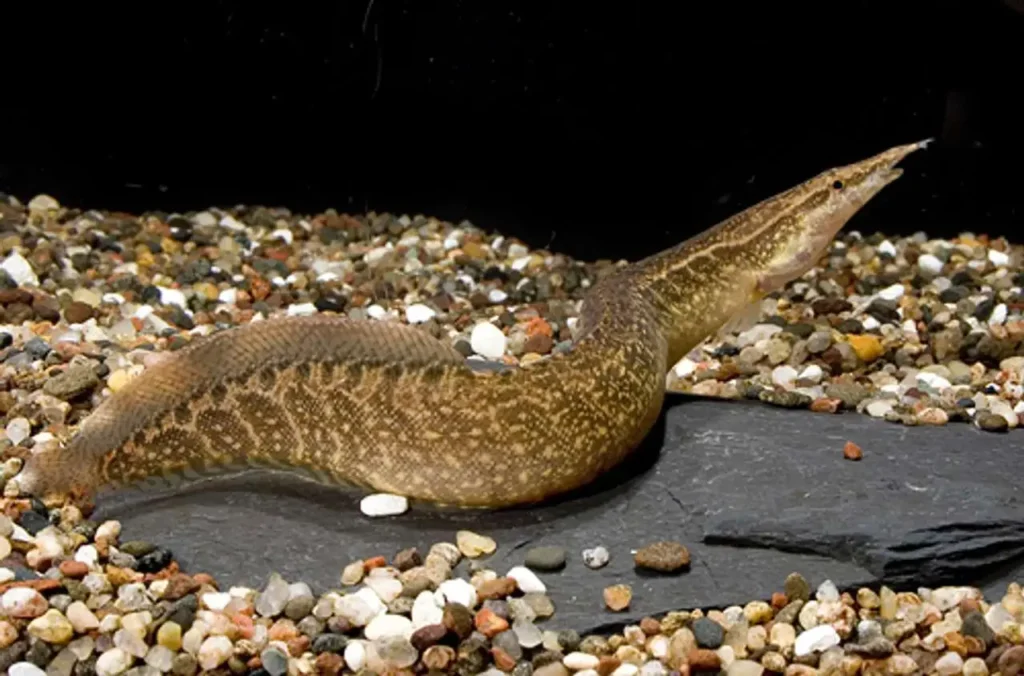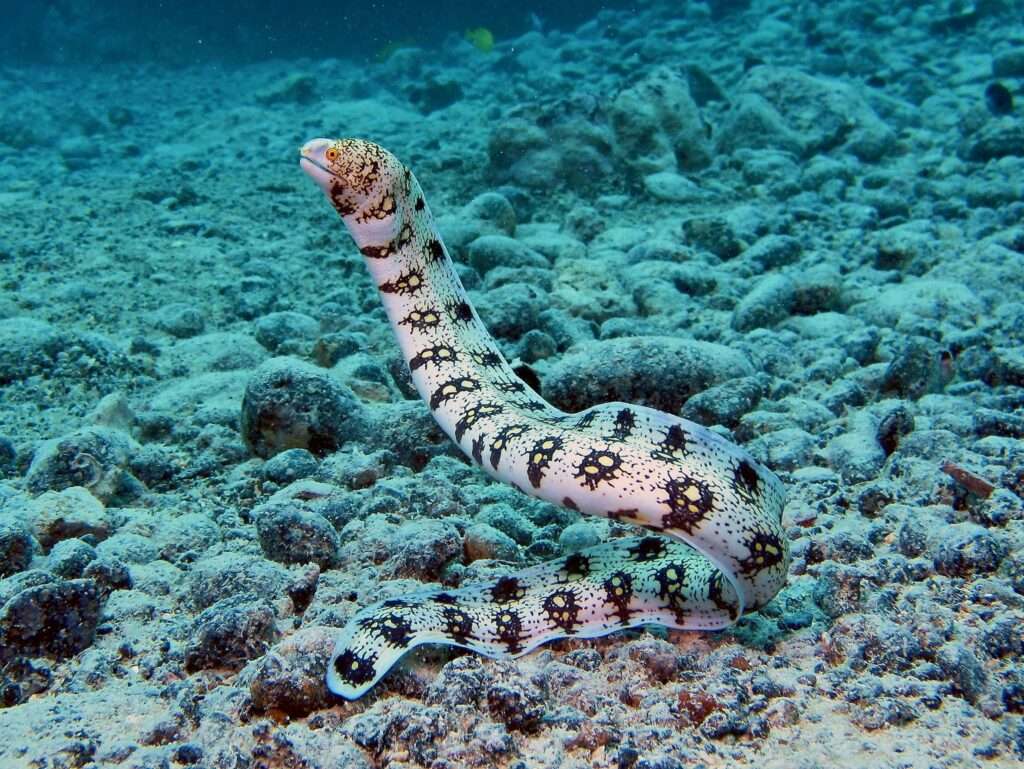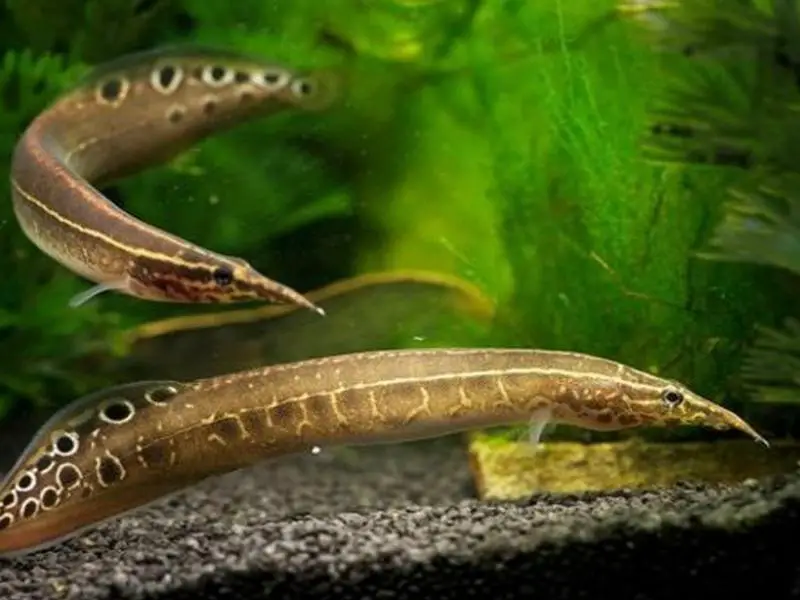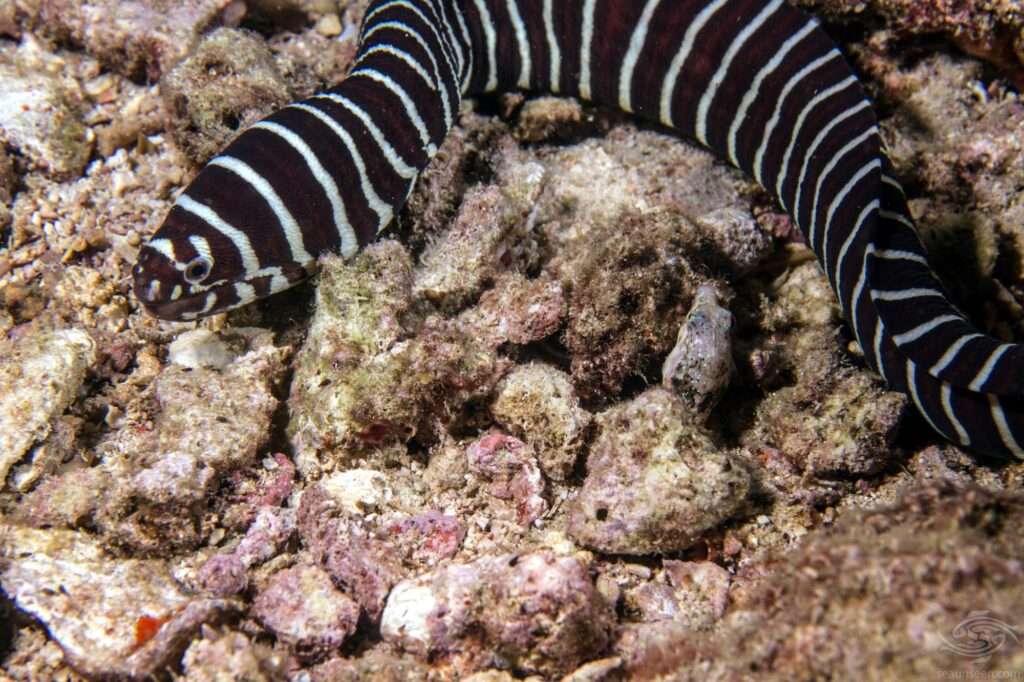
Lacepède first identified the Zig Zag Eel Mastacembelus armatus in 1800. They can be found throughout Asia, from Indonesia to VietNam. Spiny Eel, White-Spotted Spiny Eel, Marbled Spiny Eel, White Spot Spiny Eel, Leopard Spiny Eel, Giant Spiny Eel, Car Track Spiny Eel, and White-spotted Car-track Eel are some of their other common names.
They can be found in waters that are flowing, such as rivers and streams, with sand or pebbly bottoms and typically a lot of flora. They can migrate into canals, lakes, and floodplain regions during the dry season. They can live in calm waters in coastal marshes. They eat at night on benthic insect larvae, worms, and some submerged plant material. They are nocturnal and will occasionally partially bury themselves in the substrate during the day.
Traits
The Zig Zag Eel has an extended body and a long snout. The caudal fin is connected to the expanded dorsal and anal fins. In the wild, these fish can grow to a length of just over 35 inches (90 cm), although in captivity, they typically don’t go much past 20 inches (51 cm). Spiny eels live between 8 and 18 years. It has a tan to light brown background hue, and the eye is bordered by a black horizontal stripe. It has an irregular pattern of dark patterns along the entire length of its body, vertically from back to belly. This fish and several other species of spiny eels have been known by the popular names “tyre track” and “zig zag” because of their distinctive patterning.
This fish should not be mistaken with the smaller Track Eel M. favus, which has a very similar appearance but grows to only 26 inches (70 cm) in length. Because they seem so similar, these two are frequently confused when they are young. However, there are distinguishable differences despite their striking similarity in appearance. The majority of their coloring is relatively similar, and each has a smattering of erratic dark patterns down the length of their bodies. The Zig Zag Eel (M. armatus), however, has markings that are more prominent on the upper two thirds of the body and mostly plain on the belly. They are more pronounced irregular marks on this eel, the Track Eel M. favus, that extend from the top of its back through its belly.
Keeping as Pet

Foods
These fish are omnivorous in the wild. They consume worms, other aquatic invertebrates, and benthic insect larvae at night, although they will also consume some plant stuff. They favour a diet of live, fresh-frozen items like brine shrimp, black worms, earthworms, or bloodworms, as do all spiny eels.
Although it is not always possible, certain Zig Zag Eels can be made to consume freeze-dried brine shrimp or bloodworms. Make sure their tank mates are too big to fit in their mouths because they will also consume little fish. Even half-grown animals can easily eat livebearers like platies and young goldfish for a short lunch.
Eels only need to be fed once every two to three weeks, and some may reject food supplied more frequently than that. As these eels typically feed at night, make sure they receive their fair amount of the food. Frequently, the people living in the middle and on top consume all the food before it sinks.
Face Difficulty to Keeping in Aquarium
Eels are typically recommended for more experienced aquarists rather than fish keepers who are just starting out. Since zig zag eels are sensitive to movement, it is advisable to get a specimen that has been in the fish shop for at least a week before you buy it. Otherwise, the stress from one or two motions will make the fish weak. It typically takes some time for it to get over its timidity after being introduced to its new tank. Getting them to eat during the first two weeks can be really challenging.
They do need water that is exceptionally pure. They have very thin scales covering their bodies, making them vulnerable to parasites and fungi, as well as extremely sensitive to treatments. Copper-based treatments should be avoided because these fish do not respond well to them. These eels grow pretty large and have a long lifespan if properly cared for.
Table





